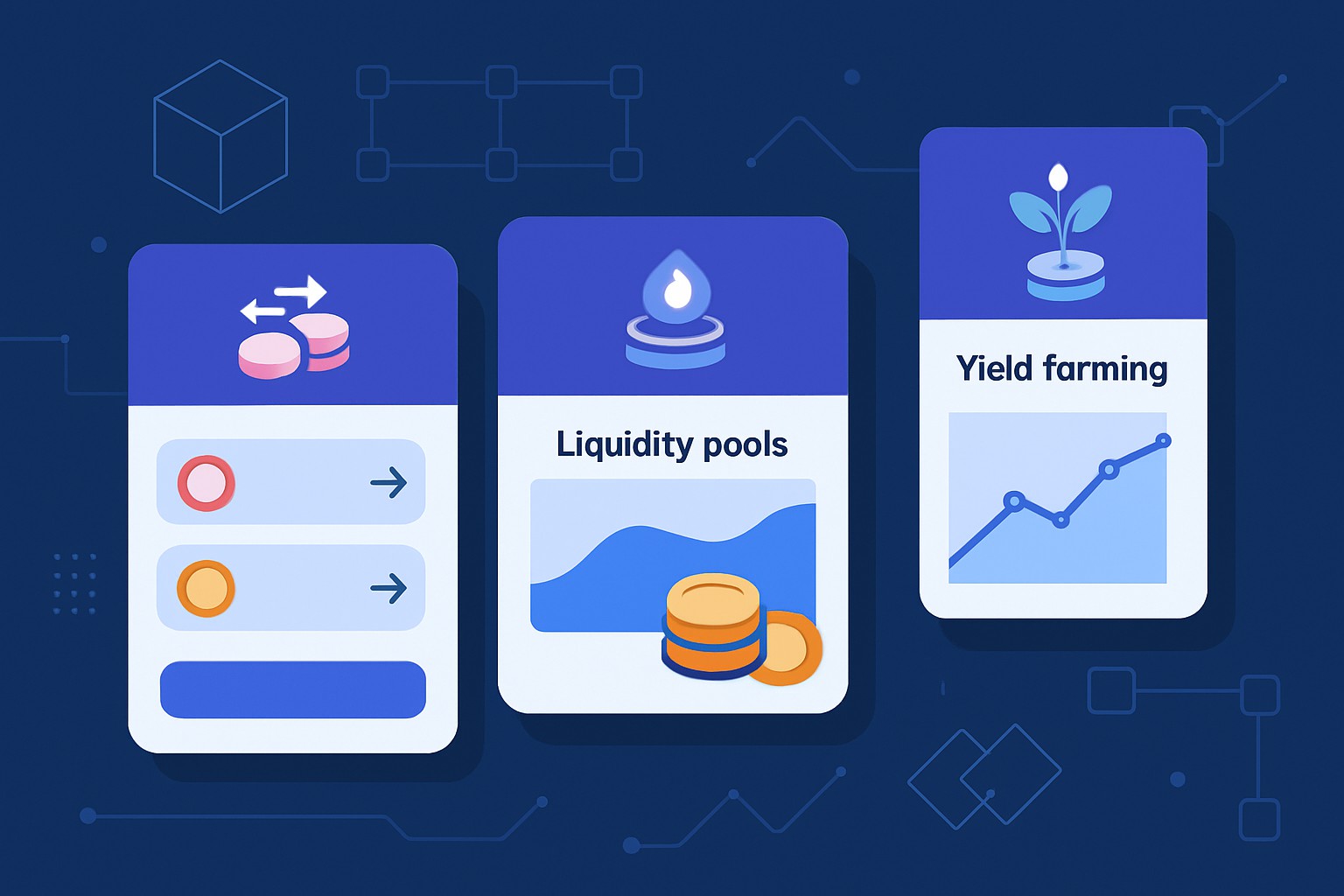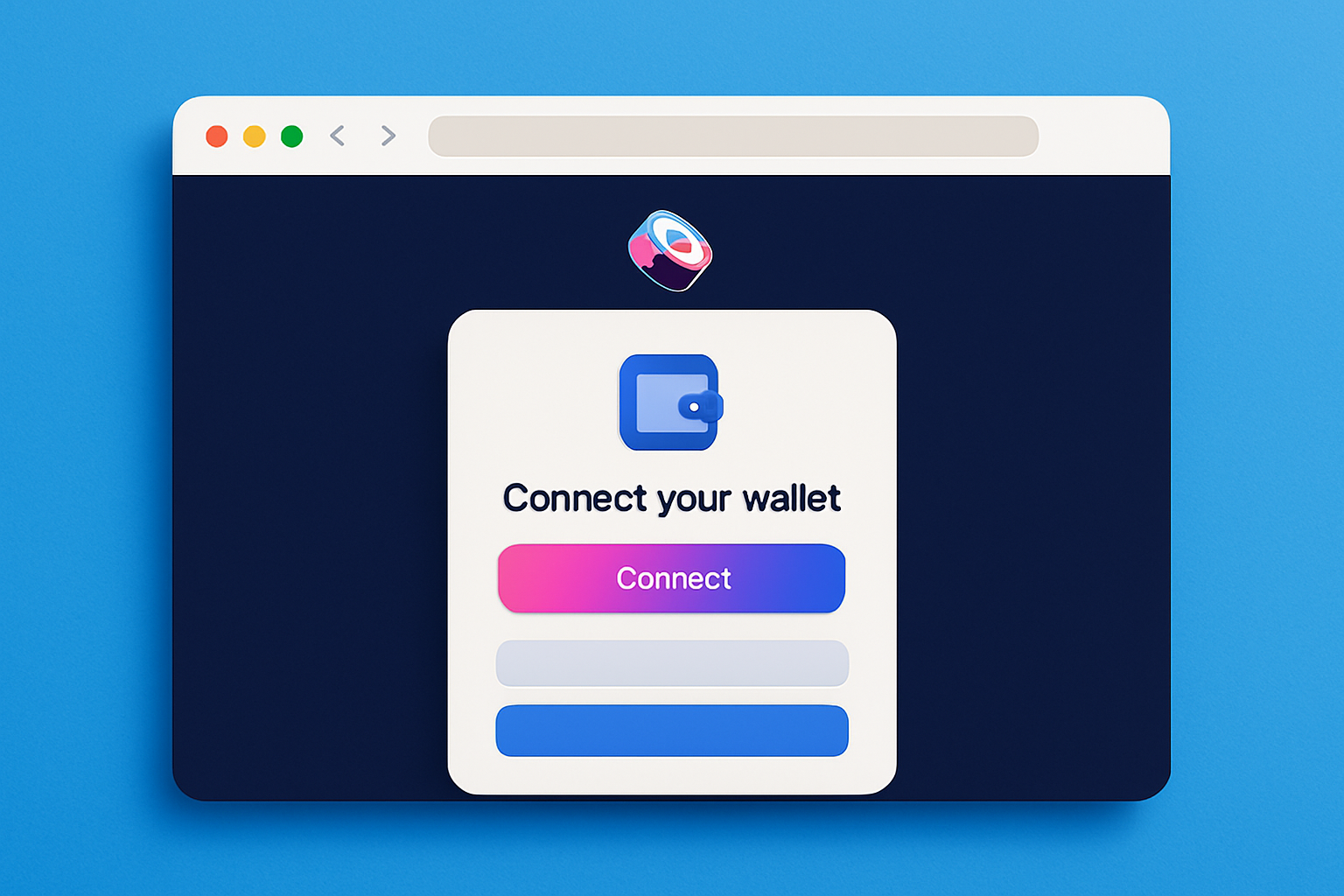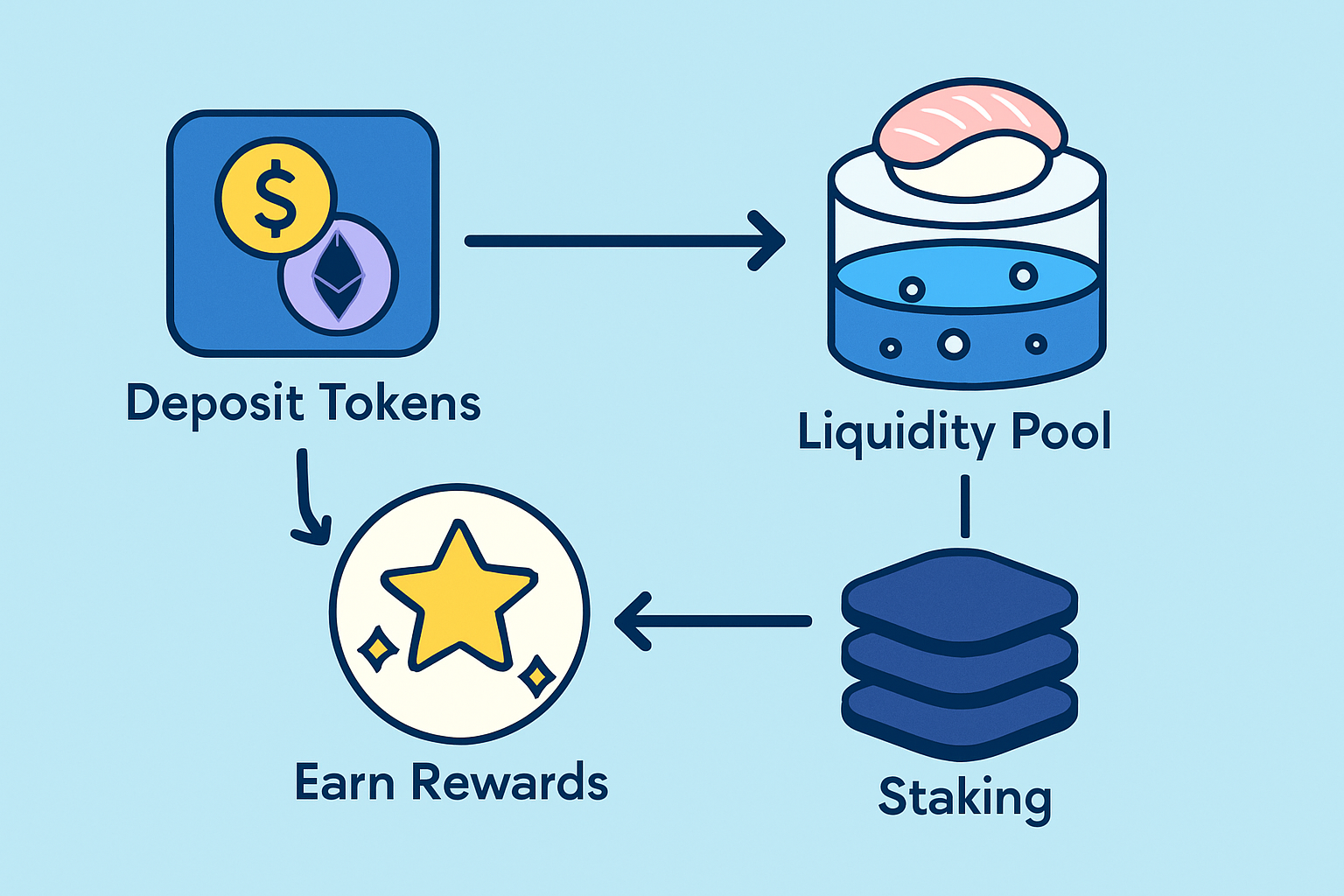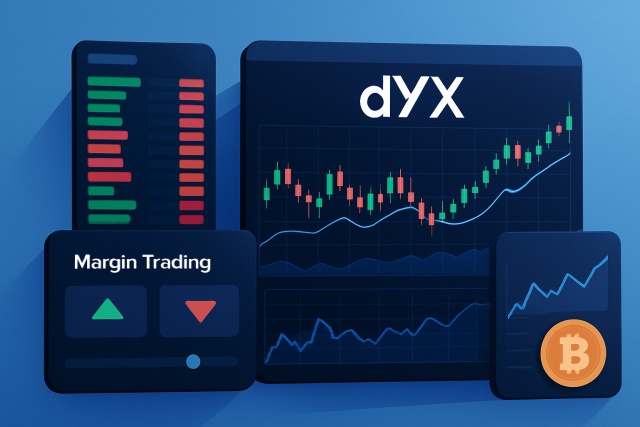How to Use Sushiswap for Token Swaps and Yield Farming


Sushiswap is a standout decentralized exchange (DEX) built on the Ethereum blockchain that lets users trade cryptocurrencies without dealing with middlemen. Unlike typical centralized exchanges, Sushiswap operates on smart contracts and delivers smooth, secure token swaps in a fully decentralized way. Over time it has gained a reputation not just for simple token swapping but also for yield farming where users stake crypto assets to earn extra rewards.
This article serves up a clear no-nonsense step-by-step guide to using Sushiswap for token swapping and yield farming.
A Friendly Introduction to Sushiswap
You’ll need a compatible cryptocurrency wallet and some ETH or tokens to trade or farm. You should also have at least a basic grasp of Ethereum or similar blockchains like Polygon or Binance Smart Chain to get started with Sushiswap.
Set up a wallet that works with Sushiswap like MetaMask or Trust Wallet. Just don’t forget to tuck away your private keys somewhere safe.
Load your wallet with ETH or ERC-20 tokens you’ll want for swaps or to add to liquidity pools.
Visit the official Sushiswap site (https://app.sushiswap.org) and connect your wallet by approving the connection.
Spend some time getting cozy with the interface. Explore the Swap, Pool and Farm tabs until you can navigate it easily—okay, maybe not literally, but you get the idea.

A Friendly Guide to Navigating Token Swaps on Sushiswap
Swapping tokens on Sushiswap is straightforward and generally works like a charm thanks to the automated market maker technology that keeps liquidity flowing. You simply pick the token you want to trade, select the one you’re hoping to get back and punch in the amount. A couple of things to watch out for are slippage tolerance which helps manage price swings during the swap and transaction fees usually paid as gas on Ethereum or similar fees on other blockchains.
Head over to the "Swap" tab on the Sushiswap interface. This is where the magic begins.
Choose the input token you want to trade from the dropdown or use the search bar if you prefer typing.
Pick the output token you hope to receive in return and fingers crossed it’s a good deal.
Enter how much of the input token you want to swap. Double-check the numbers.
If prices have been all over the place lately, tweak the slippage tolerance in settings to avoid failed transactions.
Take a breather and review the estimated amount you’ll get. Also keep an eye on any fees or the price impact to be safe.
When you’re ready, confirm the swap by approving the transaction in your connected wallet then sit tight while it gets confirmed on the blockchain.
If your swap fails or drags on longer than you hoped, it usually boils down to not enough liquidity for the token pair or gas fees on the network suddenly spiking. Tweaking your slippage tolerance just a notch can do the trick, but watch out—you don’t want to accidentally pay more than you bargained for.
Getting Started with Yield Farming on Sushiswap Your First Steps Into DeFi
Yield farming is basically the art of adding liquidity to decentralized exchanges like Sushiswap to rake in some rewards. On Sushiswap, you toss your tokens into liquidity pools and get LP (Liquidity Provider) tokens back as a kind of receipt. Then, you can stake those LP tokens to earn SUSHI tokens as a nice little bonus. The returns can look pretty tempting, but yield farming isn’t without its twists and turns. Things like impermanent loss and the usual rollercoaster of market ups and downs.
- Supply liquidity to various token pools to keep trading flowing smoothly while pocketing some fees along the way.
- Earn SUSHI tokens as tasty rewards for pitching in your liquidity.
- Swing by now and then to harvest your accumulated SUSHI rewards and see your yields grow.
- Put your earned SUSHI to work by staking it in dedicated contracts, unlocking extra rewards and boosting your overall returns.
A Clear Guide to Yield Farming on Sushiswap Your Go-To Playbook for Earning with a Dash of DeFi Fun
Choose a liquidity pool that matches your tokens and fits your risk tolerance.
Toss in equal values of both tokens into the pool to get the liquidity ball rolling.
You’ll then receive LP tokens that represent your slice of the pie in the pool.
Take those LP tokens and stake them in Sushiswap farming contracts to start raking in rewards.
Keep a casual but steady eye on your earnings dashboard to watch your SUSHI rewards stack up.
When the mood strikes, feel free to withdraw your staked LP tokens and the rewards you’ve gathered. Whether you want to cash out or reinvest, it’s all up to you.

To really squeeze the most juice out of yield farming, it is a good idea to regularly compound your rewards by tossing your freshly harvested SUSHI tokens right back in. This pesky thing creeps in when token prices drift apart, quietly nibbling at your overall profits. Being picky with pools pays off, so consider how jumpy the tokens are and what kind of rewards they’re dishing out before diving in.
What You Should Know About Fees and Security on Sushiswap (Because Knowing Never Hurts)
Sushiswap charges a 0.3% fee on swaps and that fee is handed back to liquidity providers which boosts their returns. Gas fees appear whenever you deposit, stake or withdraw. These pesky costs can eat into your profits so it is smart to time your transactions when gas prices dip.
Keeping your Sushiswap activities secure starts with looking after your wallet’s private keys like they’re your most prized possession. Picking trustworthy wallets like MetaMask is a smart move that pays off over time. Watch out for phishing sites posing as Sushiswap. Never ever share your private keys.
Tips and Strategies for the Savvy User
Seasoned users tend to boost their returns on Sushiswap by automating reward compounding and wisely spreading their bets across several liquidity pools. They also take advantage of multi-chain versions of Sushiswap like those on Avalanche or Polygon.
- Consider giving auto-compound apps or bots a try to regularly reinvest your yields because it is a handy way to really let compound interest do its magic over time.
- Spread your liquidity provision across different pools with varying risk and reward levels. This is a smart step to strike a smoother balance and avoid putting all your eggs in one basket.
- Keep a close eye on token price swings to stay ahead of impermanent loss, and don’t hesitate to adjust your positions when the situation calls for it.
- Make good use of portfolio trackers and DeFi dashboards because they are lifesavers for keeping tabs on your farming and swapping activities without breaking a sweat.
Frequently Asked Questions
What is the difference between providing liquidity and yield farming on Sushiswap?
Providing liquidity means depositing equal values of two tokens into a pool so you can earn a share of the 0.3% trading fees. Think of it as quietly collecting your slice of the pie. Yield farming takes things up a notch. You stake the LP tokens you get from providing liquidity into a farm to earn extra rewards usually paid out in SUSHI tokens. It’s like letting your earnings work overtime and earning some extra pocket change.
How do I avoid high gas fees when using Sushiswap?
To dodge those pesky high gas fees it’s usually best to make your moves when the network is quieter like on weekends or late at night. Besides timing it right using Layer 2 networks such as Polygon or Arbitrum can save you quite a few pennies because they tend to be much kinder on your wallet than the Ethereum mainnet. Your gas bill will thank you.
What is impermanent loss and how can I minimize its risk?
Impermanent loss happens when the prices of the tokens you’ve deposited change compared to when you put them in. This can leave your holdings worth less than if you’d just held onto the tokens alone. To reduce this risk it’s often better to provide liquidity using stablecoin pairs or tokens that typically move together over time. This approach lowers unexpected dips and keeps your investment smoother.
Is it safe to connect my wallet to Sushiswap?
Yes, connecting your wallet to the official Sushiswap app (app.sushiswap.org) is generally safe as long as you stick to that URL and watch out for phishing scams. The app only asks for permission to see your address and suggest transactions. It will never ask for your private keys or seed phrase so never share those with anyone. A little vigilance goes a long way here.
What should I do if my token swap fails?
Swaps can fail for a few reasons usually because of high slippage or sudden price swings. You might try increasing your slippage tolerance a little in the settings, for example from 0.5% to 1%, to give yourself more wiggle room. Also double-check that you have enough ETH in your wallet to cover the gas fee because nothing kills a trade like running out of gas mid-transaction.
Can I yield farm on Sushiswap without a large investment?
Absolutely you can start yield farming with any amount you’re comfortable with. Keep in mind that smaller stakes may earn less profit because gas fees are mostly fixed. To get the most out of a modest investment focus on high-yield pools and try to compound your rewards regularly. Earning returns on what you’ve already earned is a great way to build up over time.






